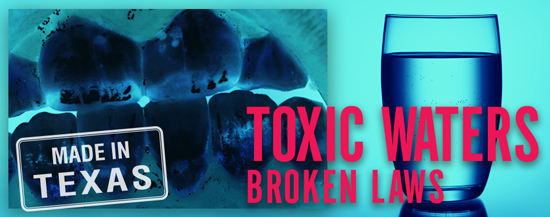The following is a transcript of Michael Connett’s conversation with Joey Navarro, EPA Outreach Specialist, on June 17, 2016. For further information about FAN’s investigation on this issue, see our report “Toxic Waters, Broken Laws.”
Q: I have a question about fluoride in the drinking water.
A: Ok.
Q: I was wondering what the requirements are for a water system that has more fluoride in its water than the secondary maximum contaminant level, which is 2 parts per million.
A: Ok, that secondary guideline is a guideline, it’s not enforceable for the public water system to adhere to. It is in their best interest just from a consumer preferability standpoint. But, again, their only requirement is to be under the 4 milligrams per liter.
Q: Ok, is there any requirements that the water system must follow if the fluoride level is above 2 parts per million but below the 4 parts per million?
A: No, I would call them and ask them what their goal is. Are they trying to adhere to the secondary maximum standard, then you’ll know it. You just have to find out what their intent is. Some have that strictly written out in their protocols, others may not be that strict. So it’s really prudent to ask the public water systems to find out what exactly their goal is.
Q: And what about children — can children drink water that exceeds the secondary maximum contaminant level for fluoride?
A: Um, based on what I’ve read there’s no restrictions when it comes to that, whether it’s young, or. . . . It’s kind of a clean slate across the board.
Q: When you say clean slate across the board, what do you mean?
A: Meaning it poses just as much risk to children as adults.
Q: Ok, at the secondary maximum contaminant level, it applies equally to children and adults; there’s no special vulnerability for children with the SMCL?
A: Correct, based on the research that we have available, that is true.
Q: Ok, are there any notification requirements that the water operators must have if the fluoride level exceeds the SMCL. Do they need to provide any specific information to consumers, or not?
A: Um, that is something that again a lot of these are at the discretion of the public water system and also another thing that you might, that the state might force public water systems to adhere to that 2.0, or might significantly encourage, and they may have some kind of compliance measures that they require their public water systems to follow, in terms of those notices and such.
Q: . . . So, what you’re saying then is that there are no federally mandated notification requirements for exceedances of the fluoride SMCL?
A: No, from the Safe Drinking Water Act, which is the federal overseen public water guideline, they are not required to send out notices if they exceed that secondary limit. Now again their state may impose a higher standard and that is something to explore on a state-by-state basis.
Q: Ok, and how do you know that there is no federal requirement for a notification?
A: I’m looking at the Safe Drinking Water Act. This is what we help review and educate the general public on.
Q: And that’s what this hotline is designed for, right, to actually answer questions about what the law requires for the Safe Drinking Water Act?
A: Yes, particularly regarding the Safe Drinking Water Act. We also act as a reference to help people get better information.
Q: So, based on what you’ve reviewed, there’s no notification requirements under federal law for exceeding the fluoride SMCL?
A: That is correct. Nothing that denotes that in the Safe Drinking Water Act.
Q: Ok, well thank you for your time. I appreciate it.
A: Certainly, you’re welcome.

